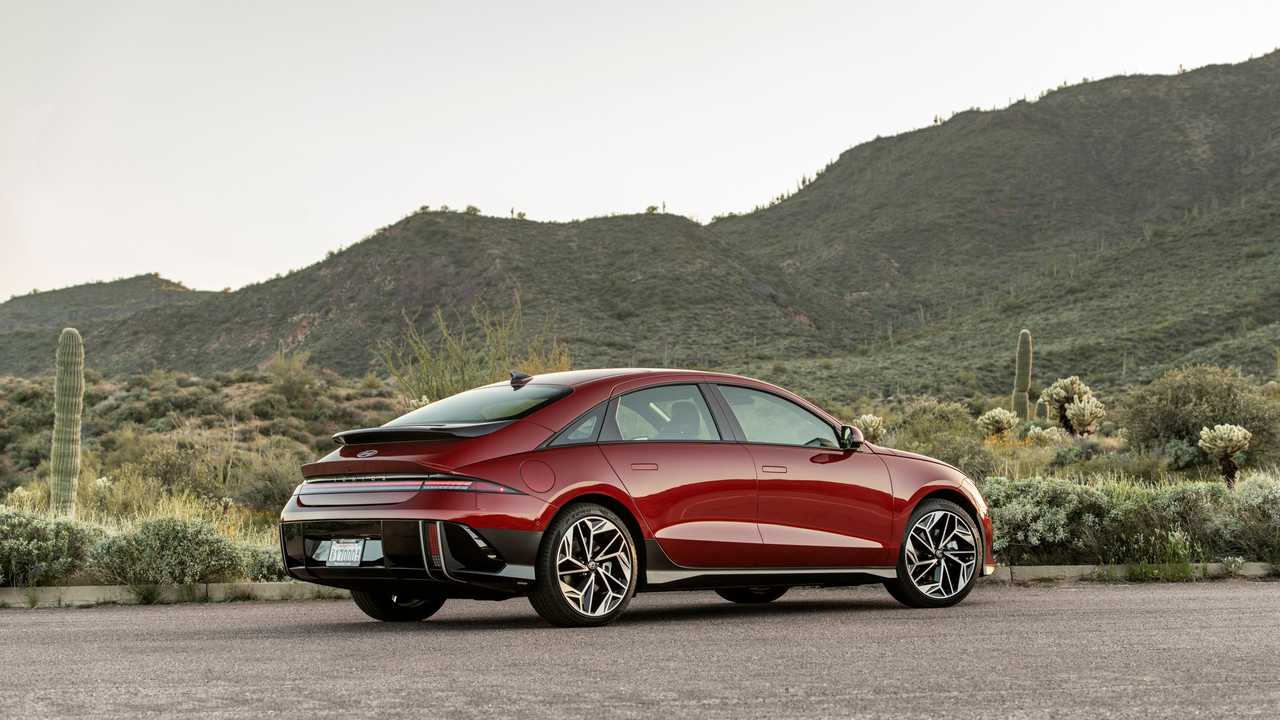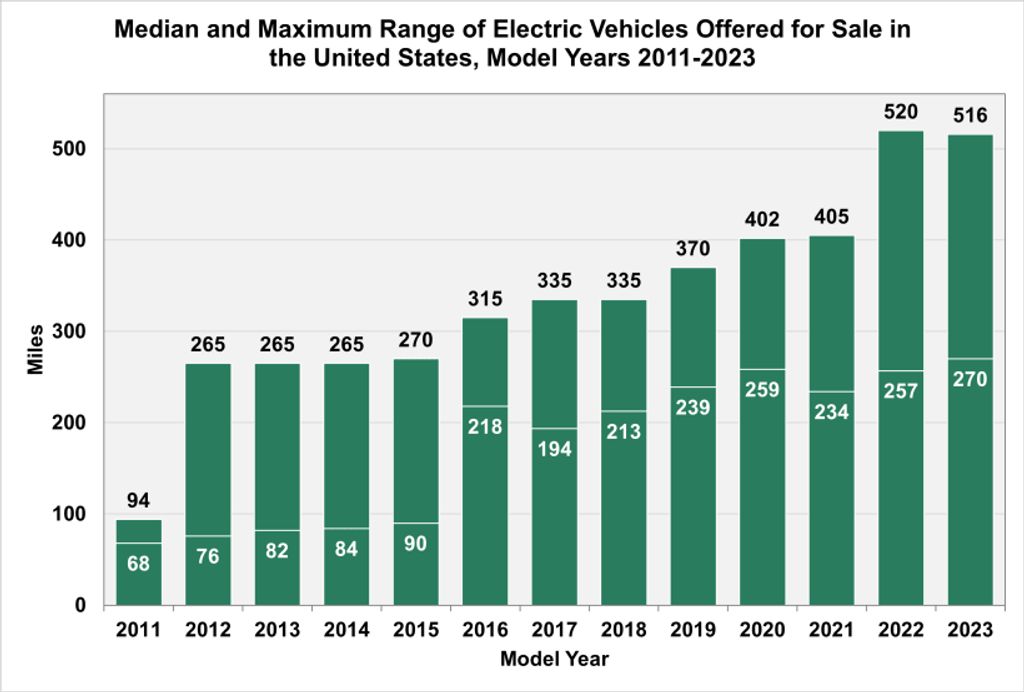The all-electric car market expands and matures, while the offer evolves to bring more range, power, better charging capabilities, and features. Today, we will take a closer look at the EPA Combined range ratings for the 2023 model year battery-electric cars (BEVs) in the U.S.
According to the data, highlighted by DOE's Vehicle Technologies Office, the model year 2023 was a record one for the median EPA range (the middle value across the market), which amounted to a record of 270 miles—up by 13 miles or 5% compared to 257 miles in model-year 2022. The previous record was 259 miles, achieved in model year 2022.
Get Fully Charged
EPA range rating
The driving range remains the most important parameter of an electric vehicle (together with its price). The EPA range rating is the only common measure for vehicles sold in the U.S. (and Canada, which mirrors the test procedure), which enables us to compare the models.
The median tells us that half of the models (and particular battery/powertrain versions) on the market have an EPA range of 270 or more miles. Of course, it does not automatically mean that the sales distribution is the same (we would love to see such a comparison).
Meanwhile, the highest EPA range among the model-year 2023 all-electric cars was 516 miles in one of the Lucid Air versions, which is four miles less than a year earlier.
Median and maximum EPA range of BEVs in the U.S. by model years 2011-2023
Note: Range is based on Environmental Protection Agency estimates. Does not include plug-in hybrid vehicles.
Source: U.S. Department of Energy and U.S. Environmental Protection Agency, Fueleconomy.gov website, accessed November 7, 2023.
The progress over the past decade is quite significant and it clearly shows us that consumers are getting models with more driving range, as well as more models to choose from, in general. In 2011, there were just a few models with a relatively low range, the report says.
On the other hand, the progress is not smooth with a constant improvement rate, as various things change (some models enter the market, some exit), while the test cycle itself changes.
For example, in the case of the 2024 model year, the EPA range will be calculated differently (as an average between the best-case and worst-case driving modes, rather than for a default driving mode), which might result in a decrease in range. We saw that recently with Tesla EVs. Other manufacturers also have to adjust to that.
Anyway, we are quite optimistic to see the median moving up towards about 300 miles.
Source: energy.gov



